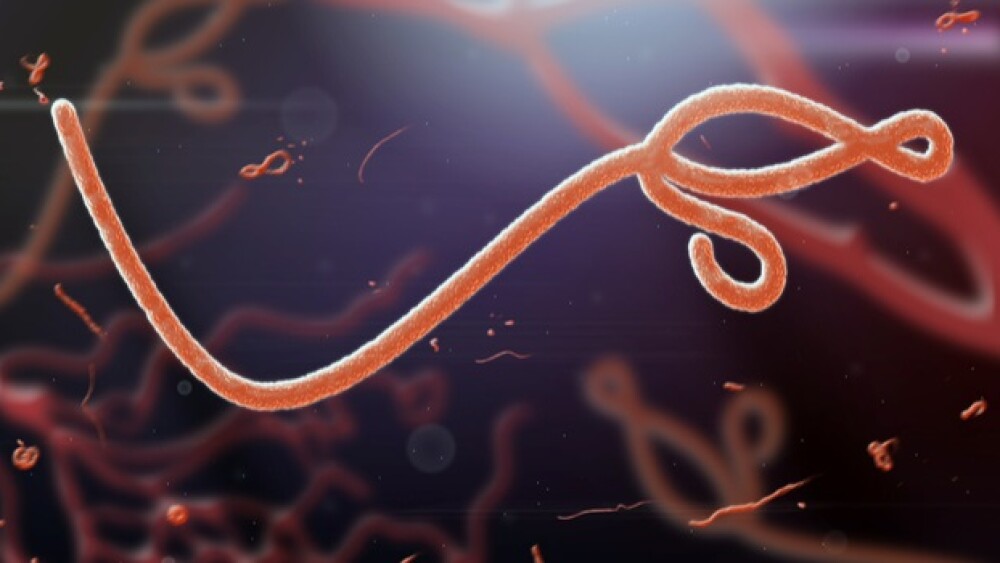The U.S. Centers for Disease Control and Prevention published research in the journal Lancet Infectious Diseases outlining the results from two experimental Ebola drugs, Gilead Sciences’ remdesivir and Mapp Biopharmaceutical’s ZMapp. Both successfully inhibited the growth of the virus in human cells in laboratory studies.
There is currently an ongoing Ebola virus outbreak in the Ituri and North Kivu Provinces of the Democratic Republic of Congo. The outbreak started in July 2018 and is the second largest reported. Since its beginning, 1,630 people have died from the disease out of a total of 2,418 diagnosed and it appears to have spread into neighboring Uganda. The largest recorded outbreak killed more than 11,000 people beginning in 2014 in West Africa.
Yesterday, the U.S. Centers for Disease Control and Prevention (CDC) published research in the journal Lancet Infectious Diseases outlining the results from two experimental Ebola drugs, Gilead Sciences’ remdesivir and Mapp Biopharmaceutical’s ZMapp. Both successfully inhibited the growth of the virus in human cells in laboratory studies.
“They’re currently being tested in a clinical trial but we need to verify and make sure that they were going to be effective,” said Laura McMullan, a CDC microbiologist who led the research, reported MSN. “Information that we knew about how well they worked was based on a different Ebola virus variant so we needed to make sure that, indeed, these compounds were going to bind and block the virus and measure that, and see if it worked as well in order for the clinical trials to proceed.”
Ebola virus causes a hemorrhagic illness that begins with common symptoms of fever, headache, muscle pain and fatigue, but can move to severe internal bleeding and death. It spreads via direct contact with bodily fluids of someone who has the disease or died from it. The average fatality rate is 50%.
ZMapp was created via a collaboration between Mapp Biopharmaceutical, LeafBio in San Diego, Defyrus, in Toronto, Canada, the U.S. government and the Public Health Agency of Canada (PHAC). It is made up of three humanized monoclonal antibodies and is manufactured in the tobacco plant, Nicotiana.
Gilead’s drug came out of a collaboration with the CDC and the U.S. Army Medical Research Institute for Infectious Diseases (USAMRIID) begun in 2014. It is a prodrug that is processed in the body to increase an active drug. The drug is believed to work by blocking a key enzyme the Ebola virus needs for replication.
The two therapies are among the four most promising that have been used in the Congo via a compassionate use framework. A third is Regeneron Pharmaceuticals’ REGN-EB3, which combines three fully-human monoclonal antibodies. The company reported in May 2018 that it was shipping the therapeutic to the Democratic Republic of Congo, which was one of three being evaluated by a panel of independent experts brought together by the WHO.
In June, a WHO spokesman, Tarik Jasarevic, told Reuters, “The protocols for the fourth are being submitted. Logistics are underway with MSF support for important of a few courses about 10 each.”
Also in June, the disease spread over the border to Uganda, causing Uganda authorities to approve the use of the three experimental Ebola treatments. However, MSN reports that even with the use of the drugs and an experimental vaccine, the disease is spreading to new parts of the North Kivu and Ituri provinces and re-infecting areas that were believed to be cleared of the virus. The Ugandan cases appear to have been contained.
MSN writes, “Deep mistrust of authorities, attacks on health care workers and simmering conflict in the region has meant that the outbreak has continued unabated 11 months after the first cases were confirmed.”
WHO provided an update on July 4, indicating that over the past four weeks a “general deterioration of the security situation and the persistence of pockets of community mistrust exacerbated by political tensions and insecurity” had caused the delays and temporary suspensions in investigating suspected cases.





